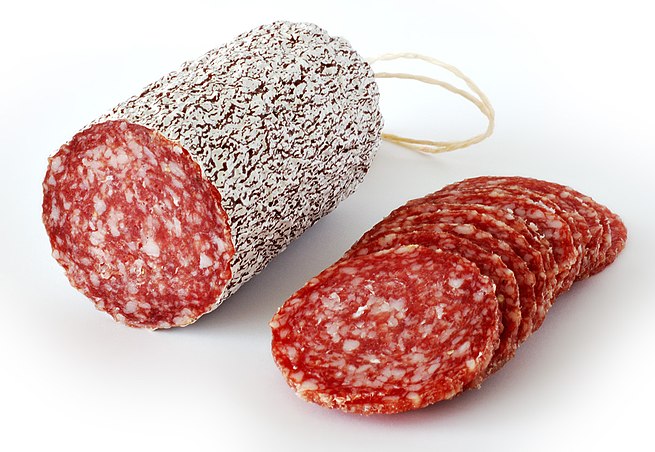
Main Difference
The main difference between Salami and Salumi is that the Salami is a cured sausage, fermented and air-dried meat and Salumi is a Italian cured meat products and predominantly made from pork.
-
Salami
Salami (singular salame) is a type of cured sausage consisting of fermented and air-dried meat, typically beef or pork. Historically, salami was popular among southern and central European peasants because it stores at room temperature for up to 40 days once cut, supplementing a potentially meager or inconsistent supply of fresh meat. Countries and regions across Europe make their own traditional varieties of salami.
-
Salumi
Salumi (singular salume) are Italian cold cuts predominantly made from pork. Salumi include bresaola, which is made from beef, and also cooked products such as mortadella and prosciutto cotto. Salami is a specific type of salumi.
The word salumi comes from the Italian word salume, pl. salumi “salted meat”, derived from Latin sal “salt”.
Examples of salumi include:
Prosciutto – An Italian dry-cured ham that is usually thinly sliced and served uncooked (Italian: Prosciutto crudo)
Prosciutto di Parma
Prosciutto di San Daniele
Speck
Culatello
Culaccia / Culatta
Capocollo, also known as Coppa or Capicola
Bresaola
Cotechino / Zampone
Guanciale
Lardo
Lonza
Lonzino
Mortadella
‘Nduja
Pancetta – Italian bacon made of pork belly meat
Salami
Genoa salami
Salame di Felino, traditionally produced in Felino and other cities in the Parma province, qualifies for Prodotto agroalimentare tradizionale
Soppressata
Strolghino
Ciauscolo
-
Salami (noun)
A large cured meat sausage of Italian origin, served in slices.
-
Salami (noun)
A grand slam.
-
Salami (noun)
A penis.
-
Salumi (noun)
Cooked meats.
